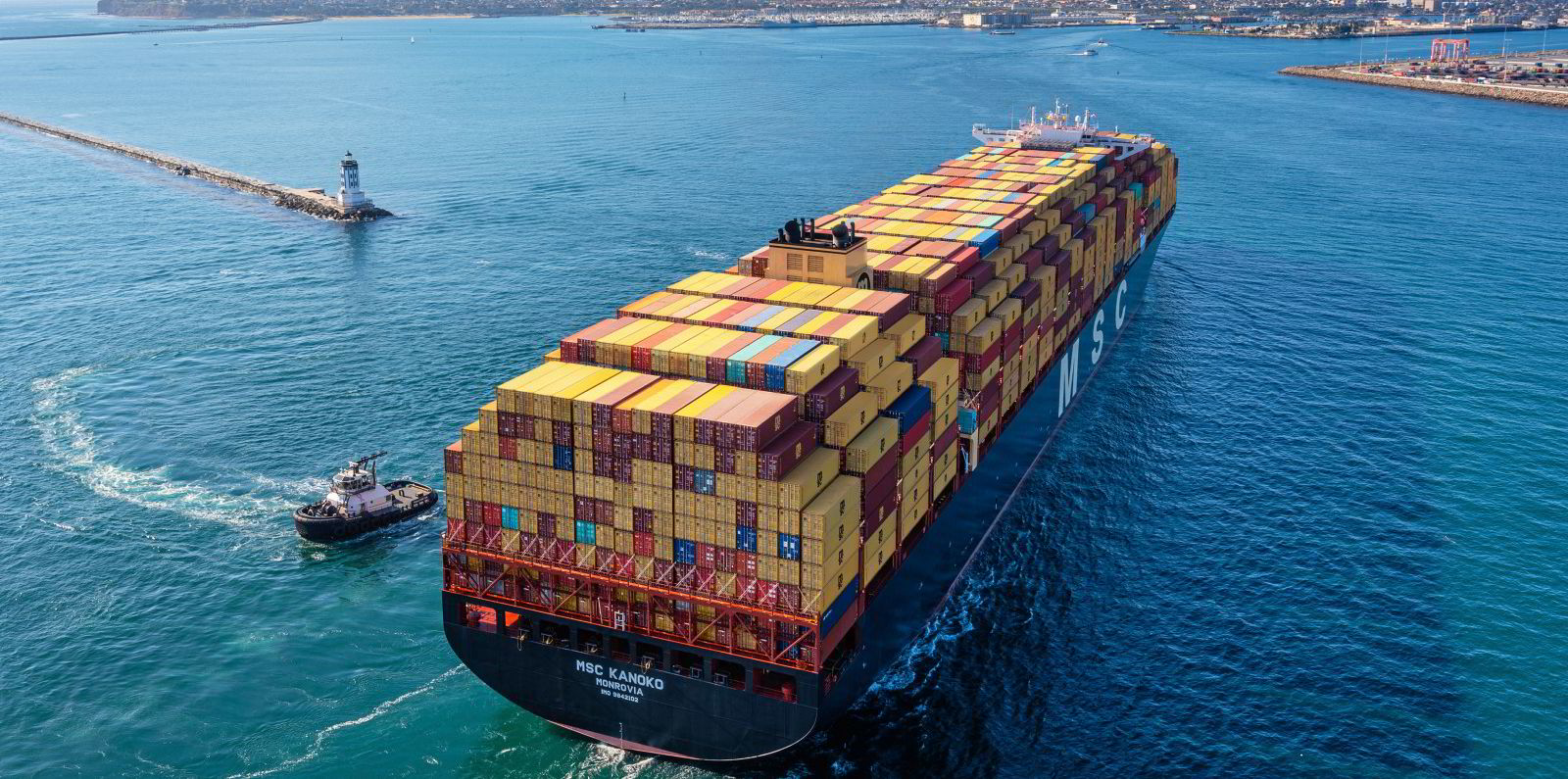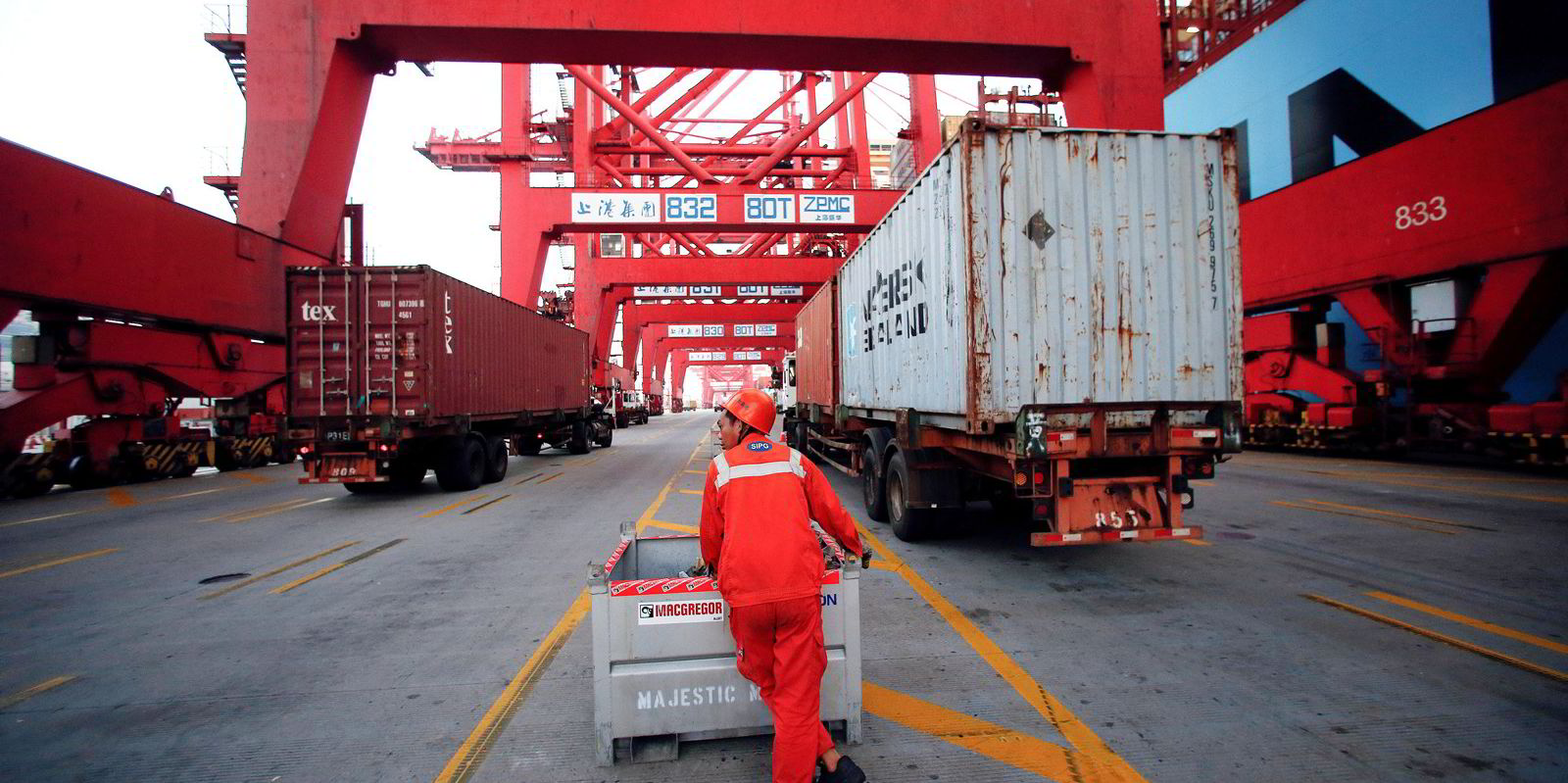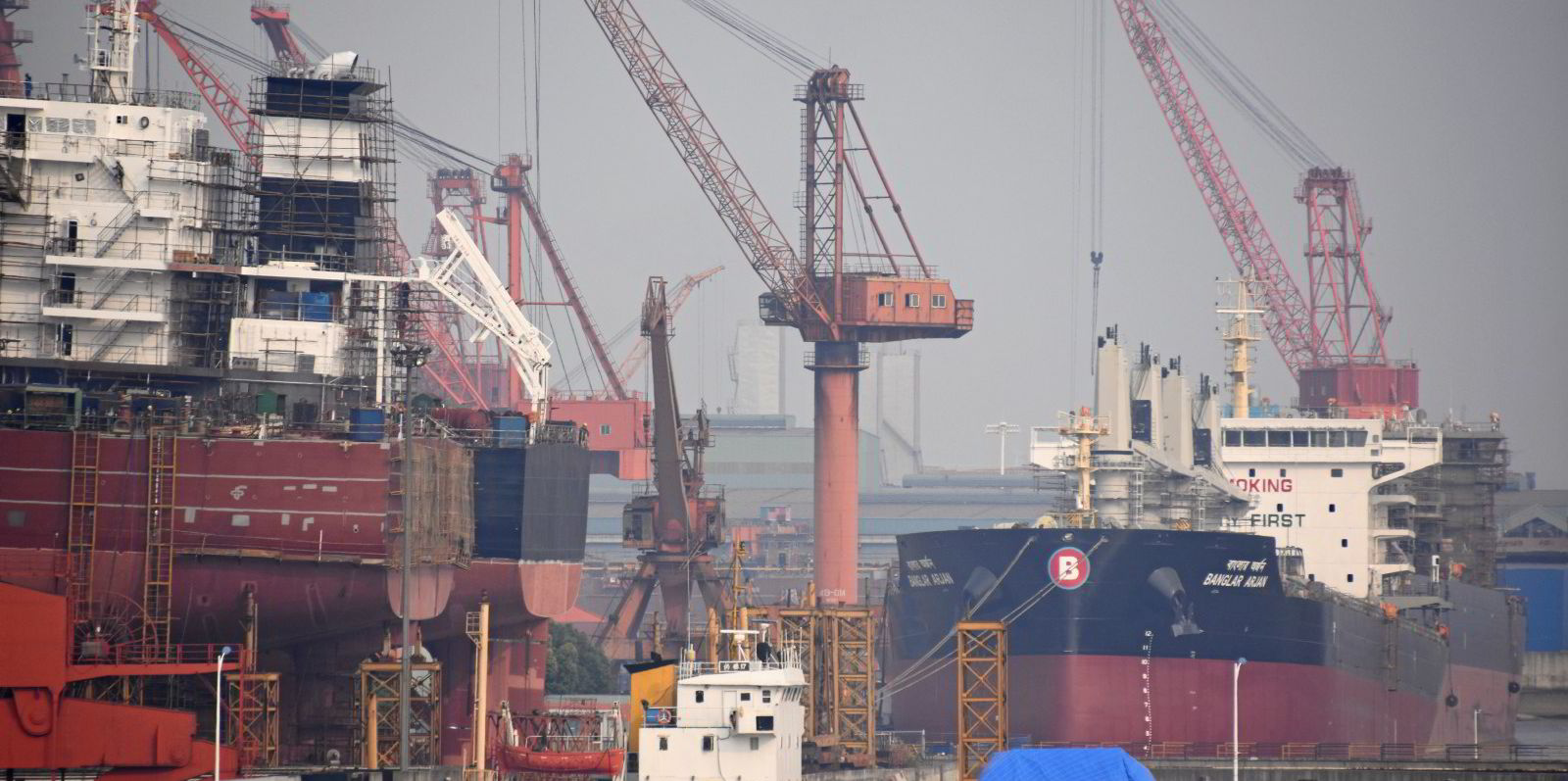Transpacific freight rates have marked their largest drop in six months as a scarcity of exports from locked-down China frees up space on container vessels.
Spot rates from Asia to the US West Coast fell a whopping 19%, or $3,750 per 40-foot equivalent unit (feu), to levels last seen in July 2021 in what is their biggest weekly drop since early November.
Rates landed at $12,596 per feu on 5 May, down from $16,346 per feu a week earlier, according to the Freightos Baltic Index (FBX) assessment. By Monday this week, a small $650 rise lifted them to $13,246 per feu.
The drop is blamed on a scarcity of exports as the ongoing lockdown in Shanghai and holidays in China resulted in the closure of factories, according to freight data portal Freightos.
Recent weeks have also seen the removal of premium surcharges that had been required for securing capacity on vessels.
The lack of exports is creating space on ships, which is further depressing rates.
Freightos quotes Robert Khachatryan, chief executive of US-based freight forwarder Freight Right, as saying transpacific “capacity has improved dramatically, we have no issues finding and booking space from Asia to the US”.
The analyst cited Chinese government data released this week that shows manufacturing levels in April were at their lowest levels since early 2020.
Nationwide freight volumes declined 15% compared with last April.
A new phase in Shanghai
The drop comes as the Covid lockdown is entering a new phase, with the market set to tighten in the coming weeks, argues Vespucci Maritime chief executive Lars Jensen.
Carriers are stepping up the number of blank sailings between Asia and north Europe, where rates are down to $10,565 per feu — their lowest point since June last year.
Blank sailings are also being introduced from Asia to the US East Coast, where rates fell a further 7% this week to $15,973 per feu.

That includes four vessels operated by Mediterranean Shipping Co (MSC), which this week announced another four sailing omissions on services from Asia to the US East Coast.
The carrier attributed the move to the “ongoing challenging market situation generating congestion and schedule delays”.
The blanked sailings start in mid-May and affect the 10,888-teu Grete Maersk (built 2005), 6,400-teu MSC Damla (built 2002), 8,204-teu MSC Bilbao (built 2006) and 6,732-teu MSC Vanessa (built 2003).
More sailing omissions
Jensen argues that the cancellation of sailings will result in upward pressure on spot rates.
“Unless Shanghai re-opens soon, the carriers are likely to further increase the number of blank sailings as well as also increasingly omit Shanghai port,” he writes in a Baltic Exchange commentary.
Blanked sailings could also result in fewer containers being repositioned into Shanghai during July and August.
“This will coincide with peak season and, if it is a strong peak, this could add further upwards rate pressure during the peak,” Jensen writes.
Jensen expects that a surge of cargo out with the eventual re-opening of the port of Shanghai would result in capacity shortages and upwards rate pressure.
Furthermore, it is likely that the peak season will start earlier in 2022 as shippers book space early to compensate for anticipated delays.
This would potentially lead to the beginning of the peak happening in the wake of the Shanghai re-opening, creating an even tighter market.
Lockdown $28bn hit on trade
The Shanghai lockdown has already delivered a $28bn hit to global trade, according to analysis by data and analytics company Russell Group.
Some 14.7% of Shanghai’s exports in the two months to early May go to Long Beach and Los Angeles, both of which are suffering from Covid-related backlogs.
“The delays in China have caused chaos across the global economy, hitting consumers and corporates alike,” Russell Group managing director Suki Basi said.
“They will damage Western economies, particularly in the UK and USA, both of which are suffering high inflationary pressures.
“Any further supply chain shocks such as port delays will continue to push up prices and slow down the economic recovery of these economies.”
Spot rates measured by the composite FBX index — a weighted index that tracks container spot rates on 12 shipping lanes — were down more than $1,046 to $8,264 per feu over the week.







